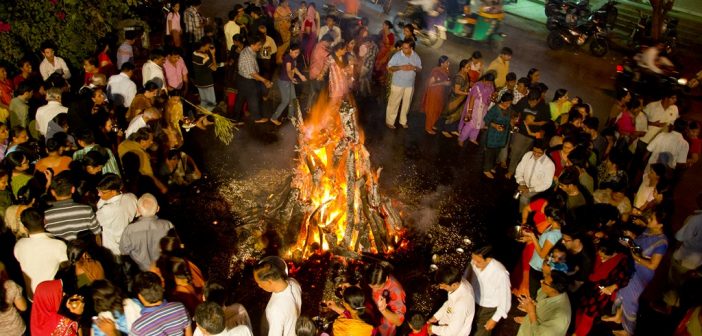Holi, the vibrant “Festival of Colors,” explodes onto the Indian subcontinent every spring, transforming streets into a kaleidoscope of joy. But beyond the revelry lies a rich tapestry of cultural significance, historical roots, and diverse regional traditions. Let’s delve into the heart of Holi, exploring its importance in India and its fascinating variations abroad.
India: A Celebration Steeped in Tradition
In India, Holi is a two-day extravaganza, each day holding a distinct meaning:
-
Holika Dahan (Burning of Holika): The first evening signifies the triumph of good over evil. Bonfires are lit, symbolizing the burning of Holika, a demon sister who attempted to kill Prahlada, a devotee of Lord Vishnu.
-
Dhulendi (The Day of Colors): The second day is a riot of colors. People playfully throw colored powder (gulal) and water balloons at each other, blurring social barriers and fostering camaraderie. This tradition celebrates the playful love between Radha and Krishna, Hindu deities.
Holi’s Significance in Indian Culture
Holi transcends mere revelry. It holds deep cultural significance:
-
Marking the End of Winter: Holi coincides with the spring equinox, signifying nature’s renewal and the arrival of a bountiful harvest season.
-
A Time for Forgiveness and Reconciliation: The throwing of colors breaks down social inhibitions and allows people to mend relationships and seek forgiveness.
-
Celebrating Equality: Everyone, regardless of age, caste, or social status, participates in the color throwing, fostering a sense of unity and equality.
Beyond Borders: Holi’s Global Embrace
The vibrant spirit of Holi has transcended national boundaries:
-
The Diaspora’s Celebration: The Indian diaspora carries Holi traditions wherever they go, organizing colorful celebrations in countries like the US, UK, and Australia.
-
Festival Transformations: In some places, Holi takes on unique characteristics. In Trinidad and Tobago, it’s known as Phagwah, where revelers play with colored mud (abeer) alongside traditional powders.
-
A Universal Celebration of Spring: Holi’s message of renewal and joy resonates with diverse cultures. In Nepal, the festival is known as Fagu Purnima, a vibrant celebration of spring and new beginnings.
Conclusion
Holi is more than just a colorful festival. It’s a vibrant tapestry woven from cultural traditions, historical narratives, and the spirit of renewal. In India and across the globe, Holi serves as a reminder of the triumph of good, the importance of forgiveness, and the joy of new beginnings. As colors fill the air and laughter rings out, Holi unites people in a celebration of life, spring, and the vibrant spirit of humanity.





